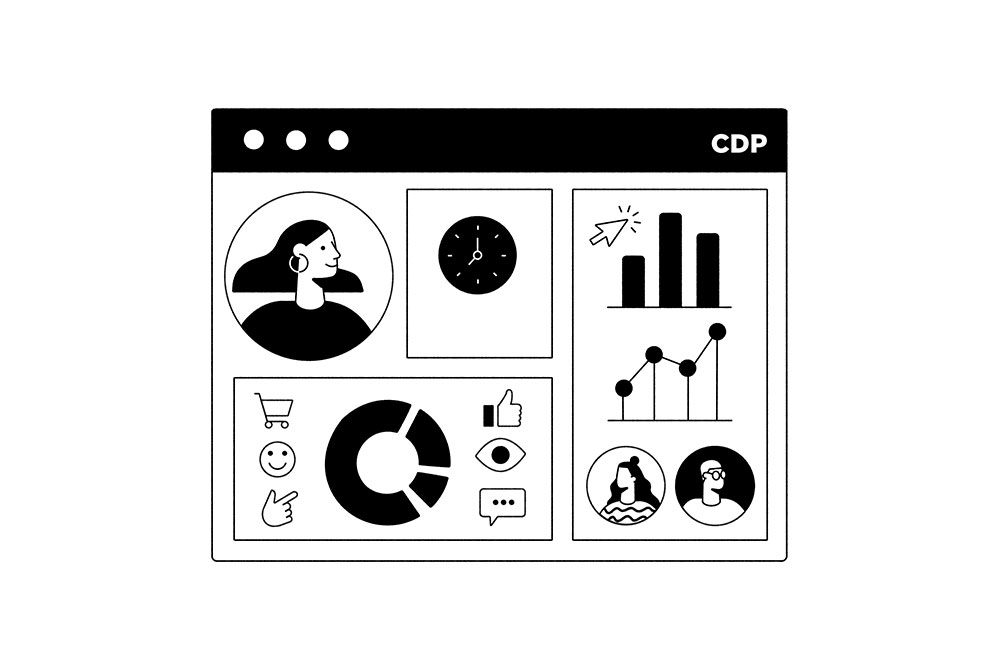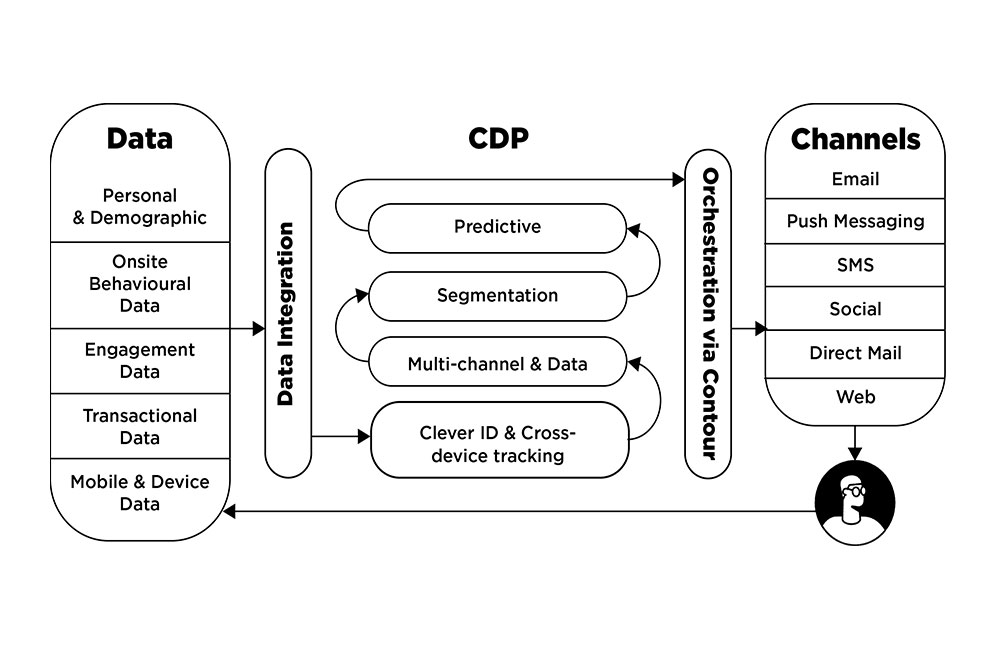Data
Don’t just collect data, use it!
Translate customer data into valuable insights with a Customer Data Platform.

Data, data and more data. They are mass-produced, but only sparingly analyzed and that is precisely where their hidden potential lies. After all, the digital footprint of your customers is where the money is at, but only if you know how to extract that value. Did you know that only 27% of all companies have data easily accessible? About 20% also indicate that they do not have a central and up-to-date customer profile. Those are pretty low numbers if you understand that a total customer profile is the key to success for any marketing campaign. With a Customer Data Platform or simply CDP, you not only increase your marketing opportunities, but also significantly increase your customer lifetime value per customer.
So what exactly is a CDP? This blog post gives you a brief overview.
A 360-degree customer profile
The more you know about your customers, the easier it is to tailor your services to them and the more likely they are to remain loyal to your services. That is exactly what a CDP can do for your organization. A software system generates, structures, de-duplicates and centralizes customer data from all your data sources and turns it into a single robust and tangible 360-degree customer profile. This gives you get a better grip on that tangle of customer data and lets you formulate your strategy in a more targeted manner going forward, which ensures an even stronger bond between your brand and the customer.
From data embedded in emails, e-commerce and CRM systems to mobile apps, websites and social media channels, any data about your customers and their behavior will yield immensely valuable insights. A mix of these three types of customer data already ensures a comprehensive customer profile:
- Demographic data: information such as age, gender, place of residence, education, job, income…
- Behavioral data: information that teaches you more about how customers interact with your brand. This can be through their engagement on social media, the click activity via your website or emails or product views.
- Transaction data: information such as the number of products purchased or returned, products removed from an online shopping cart…
The right message at the right time, for the right individual
A CDP paves the way to sustainable customer relationships, that’s for sure. That is why personalized customer experiences and targeted advertising are the two most common uses of CDPs. The greatest strength of a CDP is that it helps you create a complete and unambiguous customer profile and thus enables you to personalize the various touch points throughout the customer journey on a large scale. This way you can provide every customer with an efficient and great experience with the help of AI (artificial intelligence), machine learning and marketing automation.
But what exactly makes a customer experience ‘great’?
- Relevant: Knowing where customers are in the customer process and providing them with the appropriate information at that stage.
- Contextual: Customize messages to the customer based on the channel, time of day, their past behavior or their purchase history.
- Personalized: Segment customers based on common characteristics and then tailor your messages to these segments.
- Consistent: Regardless of channel or device, the message to the customer remains consistent.
4 key features that will get your CDP up and running
A CDP can quickly become complex and cumbersome. Therefore, a good CDP is one with a marketer-friendly and web-based interface that collects data in no time, bundles and segments customer profiles and allows for activation along the way. The user experience and interface of CDP software obviously differs from supplier to supplier. However, each CDP must have four characteristics to help you reach your goals. We briefly summarize them for you below:
- Data collection: A CDP must be able to generate data in no time as well as in real time, from various internal and external sources such as web tracking tools, servers, marketing automation, CRM and email systems, without storage limits. This includes first, second and third data. First data is information you extract from your CRM system with existing customers. This is supplemented with second party data, which is data purchased from other companies. And finally, there is the data you get from Data Management Platforms or DMPs, but more on that later.
- Profile unification: A CDP must be able to build a 360-degree customer profile, also called a Single Customer View. This requires a method that not only collects customer data, but also bundles it in a single profile, centralized in a single location.
- Segmentation: A CDP must be able to store and compare behavioral data. This allows marketers to identify behavioral patterns that are useful in converting customers more effectively. Segmenting customer profiles is really at the heart of a CDP.
- Activation: A CDP must be able to push customer segments, as discussed above, to the tools used to execute email campaigns, mobile messaging, advertising, and other campaigns.

What are the benefits of a CDP?
A CDP reduces the time and effort required to connect data sources and build a complete, unified customer profile. This saves marketing teams tons of time and allows them to refocus on what really matters. It also helps those teams target the right customers in order to implement the right campaigns and programs. Enter lower marketing costs and optimized budgets!
CDPs also make customer data accessible to everyone in the company so that every department can benefit from it. They provide sales and service teams with the information they need to quickly identify high-quality customers and cross-sell and up-sell opportunities, which helps generate more revenue. Finally, a CDP also provides a lot of flexibility and manoeuvrability. It makes it possible to quickly connect new data sources and update profiles and segments in real time.
So how do CRMs and DMPs fit into this story?
There is often confusion between a customer data platform (CDP) and other marketing and sales technology, such as CRMs (customer relationship management systems) and DMPs (data management platforms). Handlangers will help dot the i’s here and explain the difference once and for all. That way there is no more confusion and you can get started with a CDP without any worries.
- A Data Management Platform (DMP) is a tool used by marketers to improve advertising, retargeting and media buying. The collected data is mainly anonymous data from cookies, devices and IP addresses, and is only stored for a limited time. DMP data is often funnelled into a CDP to improve customer profiles.
- Customer Relationship Management (CRM) is a tool for tracking and managing customer interactions. It is primarily a sales tool used for sales management. Marketing activities can be entered into the CRM via predefined parameters. Most of the data is generated by the user.
Commit to an impeccable customer experience
Do you want to improve your customer experience and keep marketing activities effective and efficient? Then a CDP offers an excellent solution for your organization. It unites customer data across all systems and sources and, in doing so, gives you an unambiguous picture of your customer. With this unambiguous customer profile, you can then more easily analyze your customers and identify critical segments to deliver relevant, contextual, personalized and consistent messages. Sounds good, right?